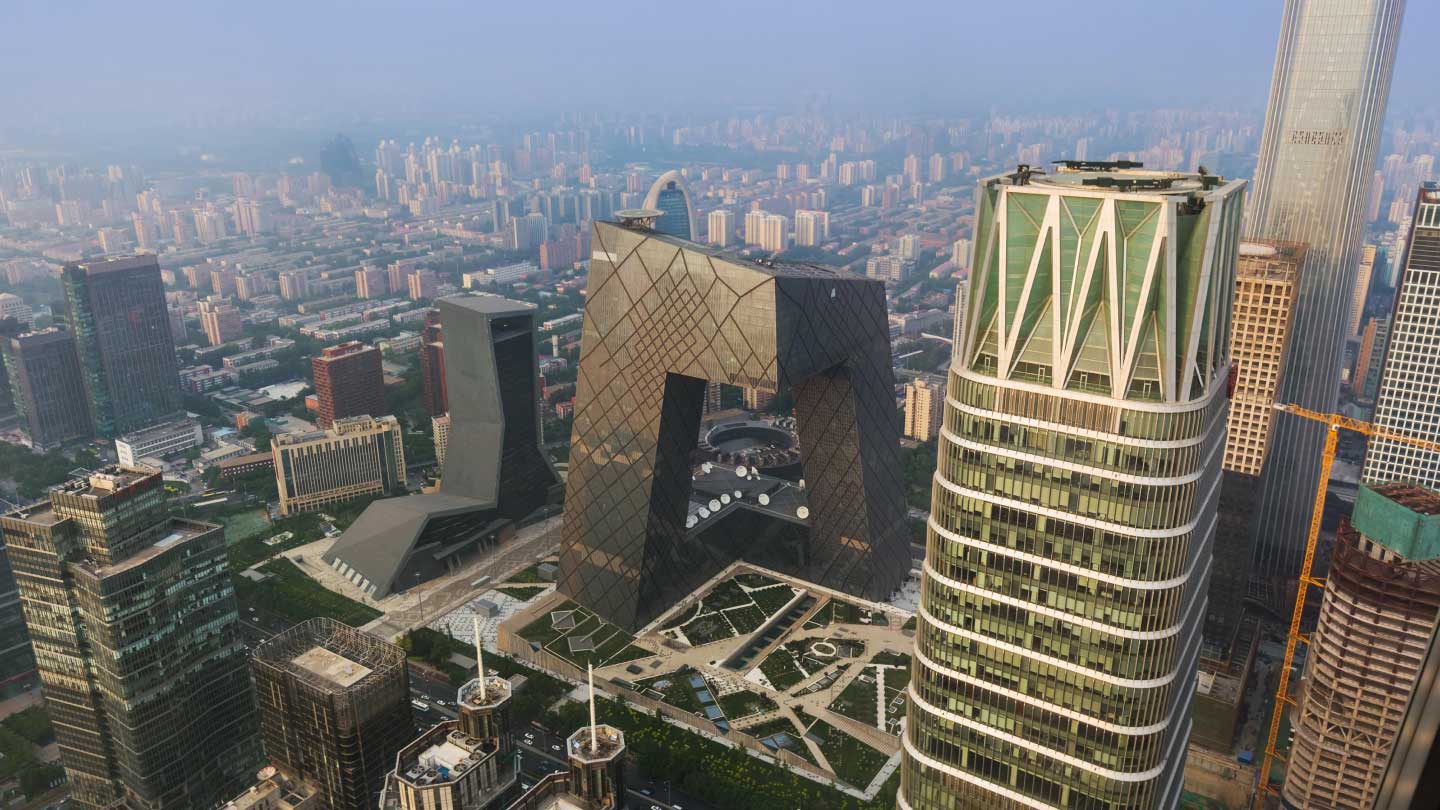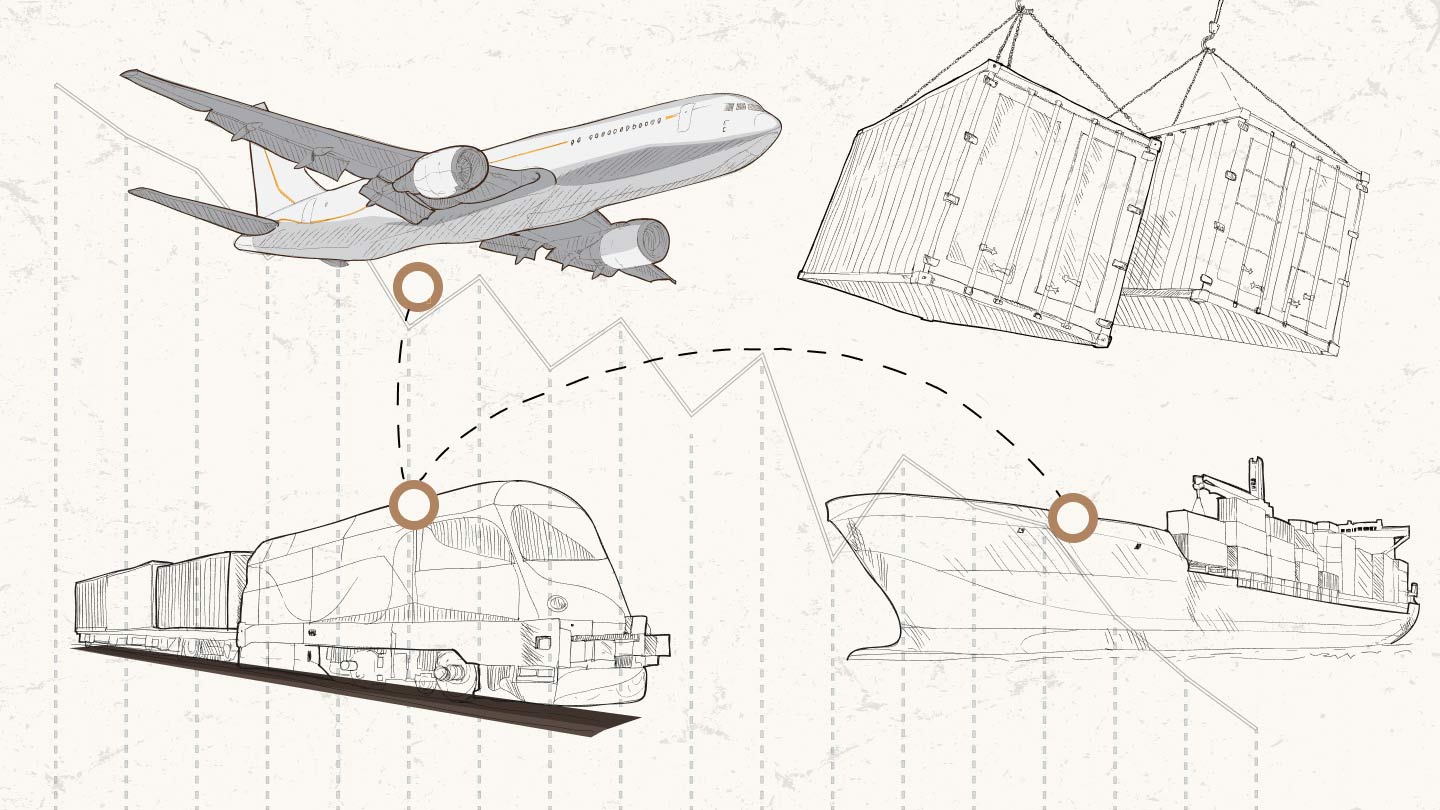
Key takeaways
- Recent trade talks between the U.S. and China were constructive and have resulted in a temporary reduction of all tariff and non-tariff measures on both sides.
- China has set an economic growth target of 5% for 2025, unchanged from last year, despite ongoing trade talks.
- For now, J.P. Morgan Research expects the temporary tariff reduction to stay in place for the rest of 2025, which will have a large impact on growth forecasts.
After months of tit-for-tat retaliation between the world’s two largest economies, the U.S. and China have temporarily agreed to lower tariffs on each other’s products.
After a strong recovery toward the end of last year, China hit its 5% growth handle, boosted in large part by exports. Will this be possible again following the substantial de-escalation in trade tensions?
How will US tariffs on China impact economic growth?
China’s economy had a solid start to the year as supportive government policy helped boost domestic demand and manufacturing activity expanded at the fastest pace in a year in March.
Strong government bond issuance, trade-in subsidy and tech upgrade schemes combined with front-loaded exports kept first quarter (1Q) growth steady at 5.4% year-over-year.
U.S. trade policy risks intensified to unexpected levels in April, after the Trump administration announced sweeping levies on China and other trading partners around the world, leading to downgrades to China’s growth outlook.
Following constructive talks in Geneva, the U.S. and China have agreed to reduce tariffs by 115% each for the next 90 days, announcing a 10% universal tariff rate.
U.S. tariff increases on Chinese imports year-to-date will fall to 30% from 145%, while Chinese tariff increases on U.S. imports will fall to 10% from 125%. During the 90-day window starting from May 14, the U.S. average effective tariff rate on China will fall to around 41% and China's average tariff rate on the U.S. will fall to around 28%.
“The magnitude of the temporary tariff reduction is larger than expected. The replacement of the 34% reciprocal tariff with a 10% universal tariff (the same as other countries) is surprisingly positive,” said Haibin Zhu, chief China economist and head of Greater China Economic Research at J.P. Morgan.
China will also remove or suspend all non-tariff retaliatory measures, such as export control on some rare earth-related mineral items, as well as anti-monopoly and anti-dumping investigations on some U.S. companies. The two sides also agreed to regular dialogue and bilateral negotiations on economic and trade issues.
The current agreement presents a temporary pause that allows room for further reduction of tariffs. Equally, the bar for a potential deal between China and the U.S. is high and it could take longer than 90-days, so a possible resurgence in tariffs cannot be ruled out yet.
“For the moment, we assume the temporary tariff reduction will stay for the rest of 2025 and this will have a large impact on our growth forecasts,” Zhu said.
J.P. Morgan Research has raised China’s full-year growth forecast to 4.8%, up from lows of 4.1% at the height of the trade tensions.
China’s real GDP growth vs. government’s growth target
J. P. Morgan Research’s previous assessments of tariff drag on GDP growth estimated a 40%, 54% and 110% tariff increase would drag China’s growth (including both direct and indirect impacts) by about 2, 2.5 and 3 percentage points, respectively.
“With the tariff increase now landing at 30%, the growth lift could be about 1.5 percentage points in a static analysis, so GDP drag is reduced from about 3 percentage points to 1.5 percentage points,” Zhu said.
“Before the escalation in trade tensions, no additional fiscal stimulus was forecast and full-year growth was expected to be 4.6%. Under the new scenario, we raise our full-year growth forecast to 4.8%,” said Zhu.
The probability of a U.S. and global recession has also been reduced to below 50%, according to J.P. Morgan Research forecasts, as real GDP growth in the U.S. for this year is expected to come in at 0.6% in the last quarter compared with the same time last year, up from 0.2% before the latest tariff news.
China growth forecasts
What policy measures will China take to counter tariff risks?
Following the escalation in trade tensions, China announced an array of stimulus measures to offset tariff risks, with the view of maintaining its growth target of around 5% for 2025.
Chinese policymakers pledged to step up monetary and fiscal support to soften the impact of tariffs on growth, including incentives to boost domestic consumption and investment.
China’s net exports are a big growth driver
At the peak of the tariff dispute, J.P. Morgan Research pencilled in an additional 1 trillion yuan in government bonds in the third quarter (0.7% of GDP) to boost domestic demand and mitigate the drag on economic growth. This additional stimulus is now less likely following the tariff pause and has been removed from J.P. Morgan Research’s policy forecast.
The estimated 400 – 600 billion Chinese yuan (CNY) ($55 – $83 billion) or 0.3 – 0.5% of GDP in consumption support is still expected according to J.P. Morgan Research forecasts, including trade-in subsidies for consumer goods, an increase in basic pension, subsidies for basic medicare and incentives to encourage new births.
“The positive tariff outcome implies the additional fiscal stimulus (1 trillion yuan around the July politburo meeting) is unlikely and removed from our forecasts,” Zhu said.
Before tariff measures were announced in April, the government raised its fiscal deficit target to 4% of GDP, up from 3% in the previous year, aiming to create 12 million jobs and boost investment with the issuance of special-purpose and ultralong treasury bonds.
“Before the escalation in trade tensions, no additional fiscal stimulus was forecast and full-year growth was expected to be 4.6%. Under the new scenario, we raise our full-year growth forecast to 4.8%.”

Haibin Zhu
Chief China economist and head of Greater China Economic Research, J.P. Morgan
Chinese banks also cut rates on personal loans to record lows, following government guidance urging banks to expand issuance of loans, relax credit limits and lower interest rates.
On the monetary policy front, the People's Bank of China (PBoC) is expected to go ahead with 30 basis points (bps) in rate cuts and 100 bps in reserve requirement ratio (RRR) cuts throughout 2025. Cutting the RRR allows lenders to increase their capacity to extend loans and encourage spending across the broader economy. The first 10bps rate cut and 50 bps RRR cut were announced in early May.
“The PBoC should gain some flexibility in policy rate cuts to address the deflation pressure. Putting all these measures together, this brings us back to a scenario similar to early April, when we had assumed a 40% tariff increase in 2025, versus the current 30% tariff increase,” Zhu said.
Related insights
-

Global Research
US tariffs: What’s the impact on global trade and the economy?
December 05, 2025
J.P. Morgan Global Research brings you the latest updates and analysis of President Trump’s tariff proposals and their economic impact.
-

Global Research
The probability of a recession has fallen to 40%
May 27, 2025
The recent de-escalation of trade tensions will likely reduce the risk of a U.S. and global recession this year.
-

Global Research
Global Research
Leveraging cutting-edge technology and innovative tools to bring clients industry-leading analysis and investment advice.
This material (Material) is provided for your information only and does not constitute: (i) an offer to sell, a solicitation of an offer to buy, or a recommendation for any investment product or strategy, or (ii) any investment, legal or tax advice. The information contained herein is as of the date and time referenced in the Material and J.P. Morgan does not undertake any obligation to update such information. J.P. Morgan disclaims any responsibility or liability, whether in contract, tort (including, without limitation, negligence), equity or otherwise, for the quality, accuracy or completeness of the information contained in this Material, and for any reliance on, or uses to which, this Material, is put, and you are solely responsible for any use to which you put such information. Without limiting any of the foregoing, to the fullest extent permitted by applicable law, in no event shall J.P. Morgan have any liability for any special, punitive, indirect, or consequential damages (including lost profits or lost opportunity), in connection with the information contained in this Material, even if notified of the possibility of such damages. Any comments or statements made herein do not necessarily reflect those of J.P. Morgan, its subsidiaries or its affiliates.
All materials and information shared with you are, unless otherwise indicated to you, proprietary and confidential to J.P. Morgan. You are hereby notified that any disclosure, dissemination, copying, distribution, or use of the information provided to you, in whole or in part, other than as expressly permitted by J.P. Morgan, is STRICTLY PROHIBITED. You are permitted to disclose the materials and information to your officers and employees on a need to know basis. Should you have any questions regarding this, please contact your usual J.P. Morgan contact. For further information please visit: Sales and Trading Disclaimer.
© 2025 JPMorgan Chase & Co. All rights reserved. J.P. Morgan is a marketing name for businesses of JPMorgan Chase & Co. and its subsidiaries and affiliates worldwide. JPMorgan Chase Bank N.A. (member of FDIC), J.P. Morgan Securities LLC (member of FINRA, NYSE and SIPC), J.P. Morgan Securities plc (member of the London Stock Exchange and authorized by the Prudential Regulation Authority (PRA) and regulated by the Financial Conduct Authority and the PRA) and J.P. Morgan SE (authorised by the BaFin and regulated by the BaFin, the German Central Bank and the European Central Bank) are principal subsidiaries of JPMorgan Chase & Co. For legal entity and regulatory disclosures, visit: www.jpmorgan.com/disclosures. For additional regulatory disclosures, please consult: www.jpmorgan.com/disclosures.